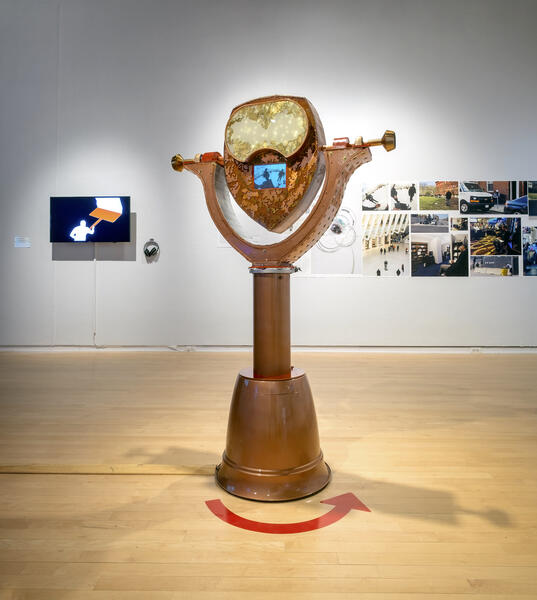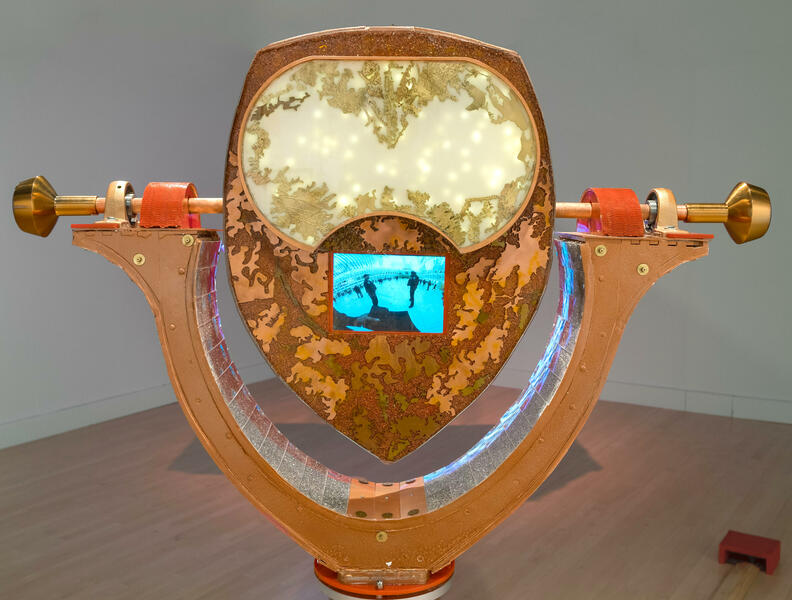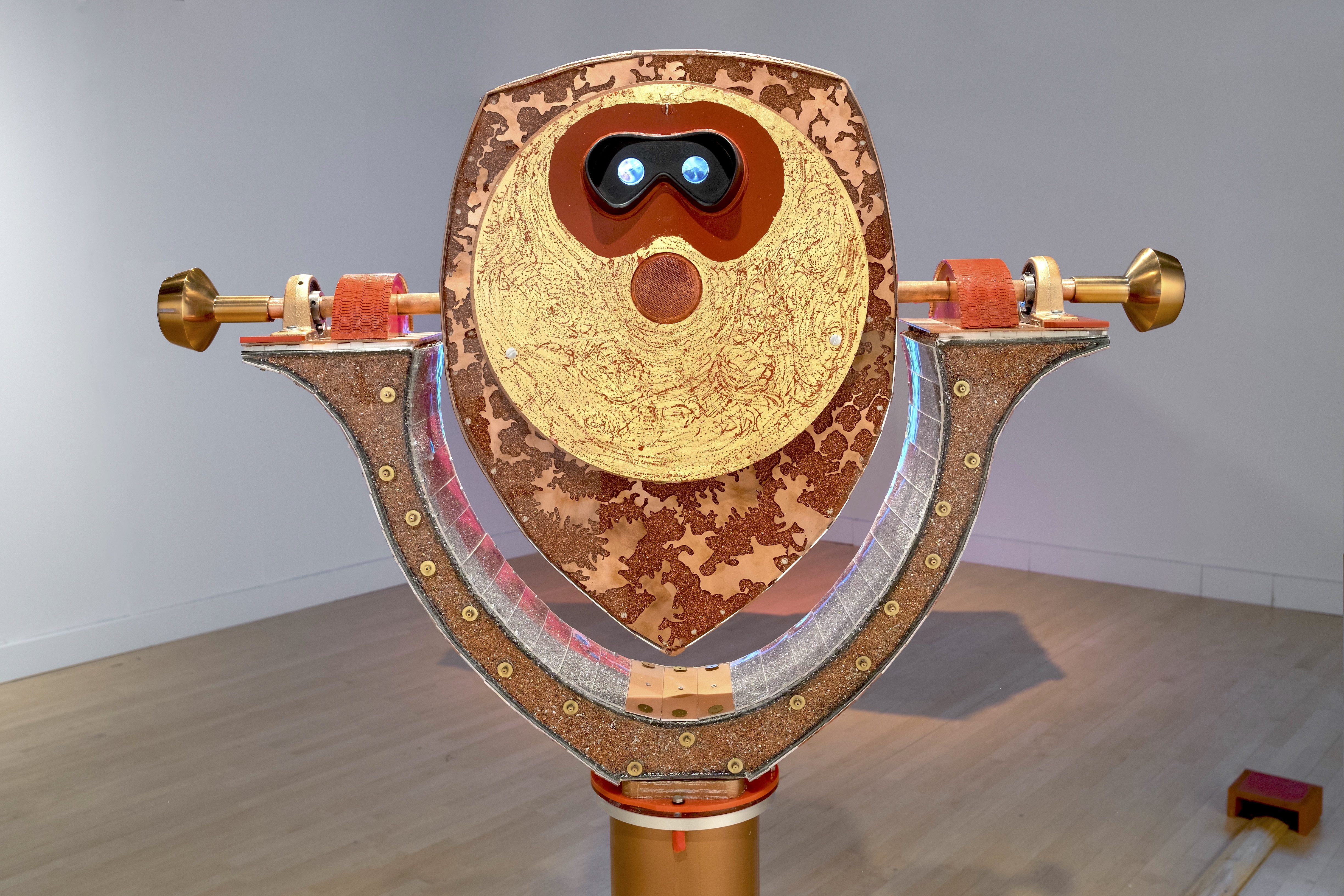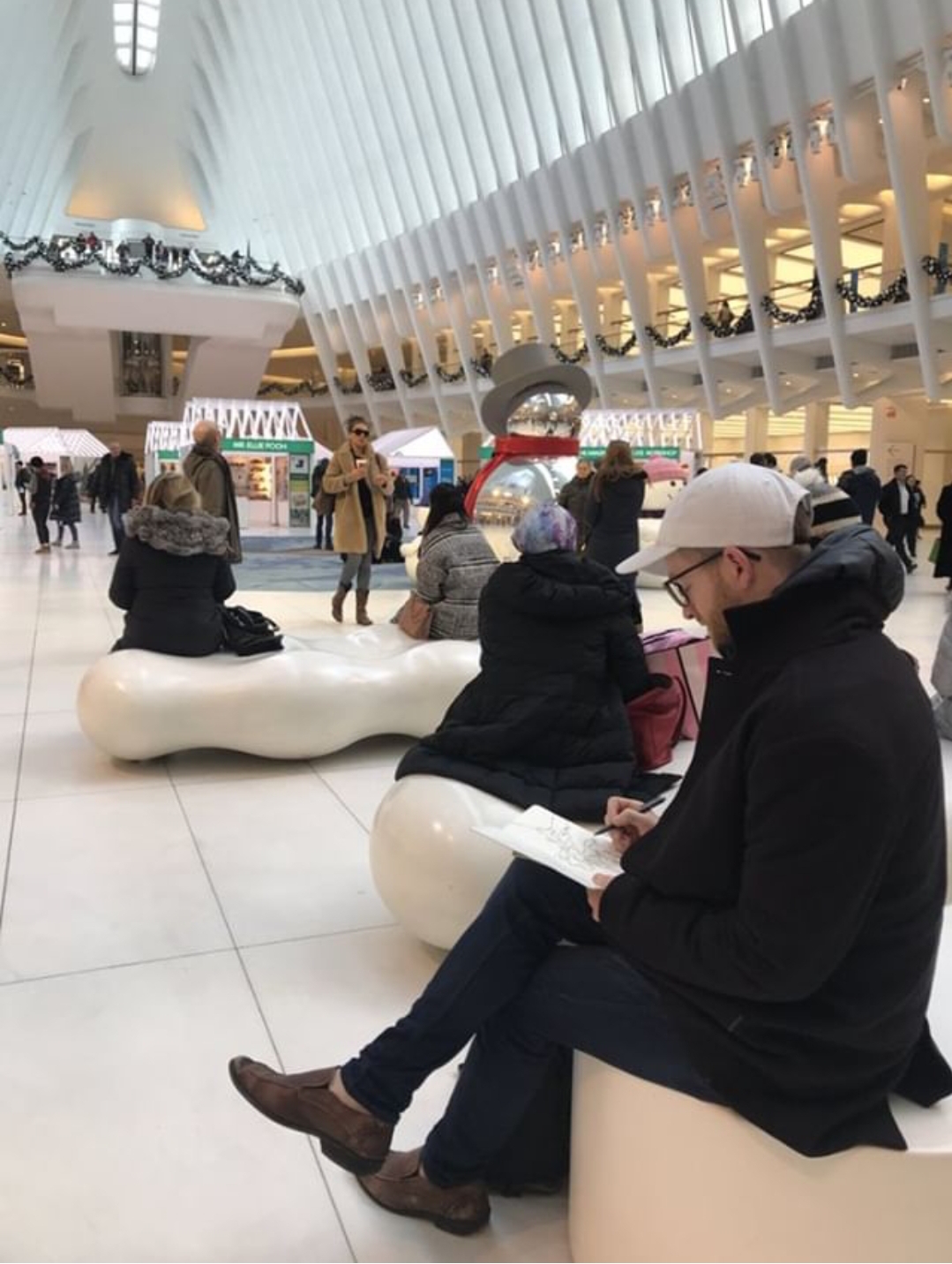PLAINCLOTHES AGENDA ARTICLE (Click to follow link)
I reimagine how to embody an archetype known as the flaneur, a mythic elitist who idly observed and recorded urban life in nineteenth century Paris. I present my art as a contemporary Black flaneur who documents shared spaces and challenges the right to observe and be idle in public. Baltimore, New York, Washington DC, and Honolulu are the areas documented.
I craft an interpretation of the artist’s role in an ethnographic manner, and unassumingly interrogate the many dimensions of the environments in which I work— probing, but treading lightly—using various forms of interviewing, drawing, filmmaking and photography. Social interactions define my practice. I point to the absurdity of what it means to see and be seen and show how others react to my body based upon my gender, race, and profession as an artist. My renegade methods (sketching in a notebook and/or recording with wearable technology) give me a baseline to investigate shared space, and my intention is to find places where I can stand in contrast to our fast-paced lifestyle and interrupt the movements of people within shared spaces by unobtrusively inserting my body. In light of implicit racial biases and the ‘see something, say something’ campaign’s outline of suspicious activity, I argue that we’ve given up our right to be passionate and willing observers.
What does this say about the relationship between artists and the societies in which we work and about how it has changed and why? Where once we might have been shocked and thoroughly offended at being tracked by large organizations and institutions, and we might have romanticized the artist out sketching, photographing, filming or painting his environment, the tables seem now be somehow turned. I am calling attention to the act of observation at a time when so many things truly need to be seen, and when people need to be listened to.
I reimagine how to embody an archetype known as the flaneur, a mythic elitist who idly observed and recorded urban life in nineteenth century Paris. I present my art as a contemporary Black flaneur who documents shared spaces and challenges the right to observe and be idle in public. Baltimore, New York, Washington DC, and Honolulu are the areas documented.
The immersive video entitled “Wide Open Skies” is a performance video that plays within the tower viewer, allowing participants to look into the lens of my experience with mostly law enforcement and security officials. The performance happened over the course of fifteen minutes at the Oculus Hub in New York City. Five different security officials approached me.
I craft an interpretation of the artist’s role in an ethnographic manner, and unassumingly interrogate the many dimensions of the environments in which I work— probing, but treading lightly—using various forms of interviewing, drawing, filmmaking and photography. Social interactions define my practice. I point to the absurdity of what it means to see and be seen and show how others react to my body based upon my gender, race, and profession as an artist. My renegade methods (sketching in a notebook and/or recording with wearable technology) give me a baseline to investigate shared space, and my intention is to find places where I can stand in contrast to our fast-paced lifestyle and interrupt the movements of people within shared spaces by unobtrusively inserting my body. In light of implicit racial biases and the ‘see something, say something’ campaign’s outline of suspicious activity, I argue that we’ve given up our right to be passionate and willing observers.
What does this say about the relationship between artists and the societies in which we work and about how it has changed and why? Where once we might have been shocked and thoroughly offended at being tracked by large organizations and institutions, and we might have romanticized the artist out sketching, photographing, filming or painting his environment, the tables seem now be somehow turned. I am calling attention to the act of observation at a time when so many things truly need to be seen, and when people need to be listened to.
-
Christopher KojzarArtist Talk at Santa Fe Art Institute
-
 a tower viewer (front)Multimedia Interactive Sculpture 6' x 3' x 1'
a tower viewer (front)Multimedia Interactive Sculpture 6' x 3' x 1' -
 BackIn the winter of 2018, I went to the Oculus Hub in New York City to once again test my methods. I didn’t even have time to turn on my camera before law enforcement approached me. Most of the interactions were with black security guards, but the power dynamics still validated how misguided our trust is in each other. Even when it’s between black men, those in authority seek to suppress the observational gaze. In the span of fifteen minutes, six guards interrupted my attempt to idly stand and draw. “Sorry brother, you can’t do that here,” one guard said. “Excuse me sir, can you tell me what are your activities at the moment?” another questioned only minutes later. “I’m drawing and recording myself draw, I replied. The security guard parroted my response over a walkie-talkie to others who watched me from afar. SWAT, New York Port Authority Police, Army personnel, and mall security patrol the Oculus Hub. A stanchion, a small spherical camera, and my sketchbook were the three objects that provoked interactions. Some officers thought that the stanchion was an easel that I brought myself. In fact, it was the property of The Port Authority of New York and had been bolted to the ground; they removed it that day.
BackIn the winter of 2018, I went to the Oculus Hub in New York City to once again test my methods. I didn’t even have time to turn on my camera before law enforcement approached me. Most of the interactions were with black security guards, but the power dynamics still validated how misguided our trust is in each other. Even when it’s between black men, those in authority seek to suppress the observational gaze. In the span of fifteen minutes, six guards interrupted my attempt to idly stand and draw. “Sorry brother, you can’t do that here,” one guard said. “Excuse me sir, can you tell me what are your activities at the moment?” another questioned only minutes later. “I’m drawing and recording myself draw, I replied. The security guard parroted my response over a walkie-talkie to others who watched me from afar. SWAT, New York Port Authority Police, Army personnel, and mall security patrol the Oculus Hub. A stanchion, a small spherical camera, and my sketchbook were the three objects that provoked interactions. Some officers thought that the stanchion was an easel that I brought myself. In fact, it was the property of The Port Authority of New York and had been bolted to the ground; they removed it that day. -
 Front detail
Front detail -
 Back detail
Back detail -
Using the tower viewer
-
Wide Open SkiesI create mixed media and immersive video art in response to interactions I experience while sharing open and public spaces with others. Urban settings inspire my art practice because there is always something happening. I have a growing catalog of work that comprises the following: drawings I have made while sitting in airports, train stations, casinos, places of business, public parks, and government buildings; live-action videos of walking and driving; and audio recordings and interviews with people I have encountered. All of this output has shaped a nuanced body of work about what it means to me to see and be seen. Everything presented in my M.F.A. thesis exhibition is an extension of self-portraiture and a visual response to my interest in exploring nineteenth-century ideals of flâneurism in today’s society. The flâneur is an archetype whose habits consist of strolling at a deliberately leisurely pace while collecting and recording urban images.
-
 Interactions at the OculusEven when I sit down and draw, even when I hold myself at a distance, more often than not, my sketchbook and my “look” (either my gaze or my physical presence) prompt interactions with security personnel, police officers, TSA agents, and pedestrians. All of these interactions lead me to believe that the right to observe freely is mired in what Mirzoeff calls “a policing of visuality,” and that the gaze is systematically obfuscated in this era of escalating surveillance and mistrust. The fifteen minute performance led to an interaction with six men, mostly security enforcement officials
Interactions at the OculusEven when I sit down and draw, even when I hold myself at a distance, more often than not, my sketchbook and my “look” (either my gaze or my physical presence) prompt interactions with security personnel, police officers, TSA agents, and pedestrians. All of these interactions lead me to believe that the right to observe freely is mired in what Mirzoeff calls “a policing of visuality,” and that the gaze is systematically obfuscated in this era of escalating surveillance and mistrust. The fifteen minute performance led to an interaction with six men, mostly security enforcement officials -
 Brett at the Oculus (photo credit: Joyce Chen)My work has inspired friends to take part in the role. There is no question that in today’s public centers, we’ve sacrificed certain ideals of pedestrian freedom. Communal trust is eroding amid sweeping revisions to security laws in urban environments. Even though these officers are rightfully doing a job to protect civilians, where do we draw a line? Loitering without explanation is also outlined by the Department of Homeland Security as an activity that the public should report for police investigation. Consequently, waiting for a friend in Starbucks, sleeping in the common area of a dorm room, or even barbecuing in a public park provokes not only a police response, but cultural fissures. The ways in which we engage in scrutinizing others in public space have been transformed — and made perverse, really — in this hyper-secured and surveilled age. Above all else, these days, when I go out in public to draw, I’m standing there and saying, “I’m here. Let me be here.”
Brett at the Oculus (photo credit: Joyce Chen)My work has inspired friends to take part in the role. There is no question that in today’s public centers, we’ve sacrificed certain ideals of pedestrian freedom. Communal trust is eroding amid sweeping revisions to security laws in urban environments. Even though these officers are rightfully doing a job to protect civilians, where do we draw a line? Loitering without explanation is also outlined by the Department of Homeland Security as an activity that the public should report for police investigation. Consequently, waiting for a friend in Starbucks, sleeping in the common area of a dorm room, or even barbecuing in a public park provokes not only a police response, but cultural fissures. The ways in which we engage in scrutinizing others in public space have been transformed — and made perverse, really — in this hyper-secured and surveilled age. Above all else, these days, when I go out in public to draw, I’m standing there and saying, “I’m here. Let me be here.”






